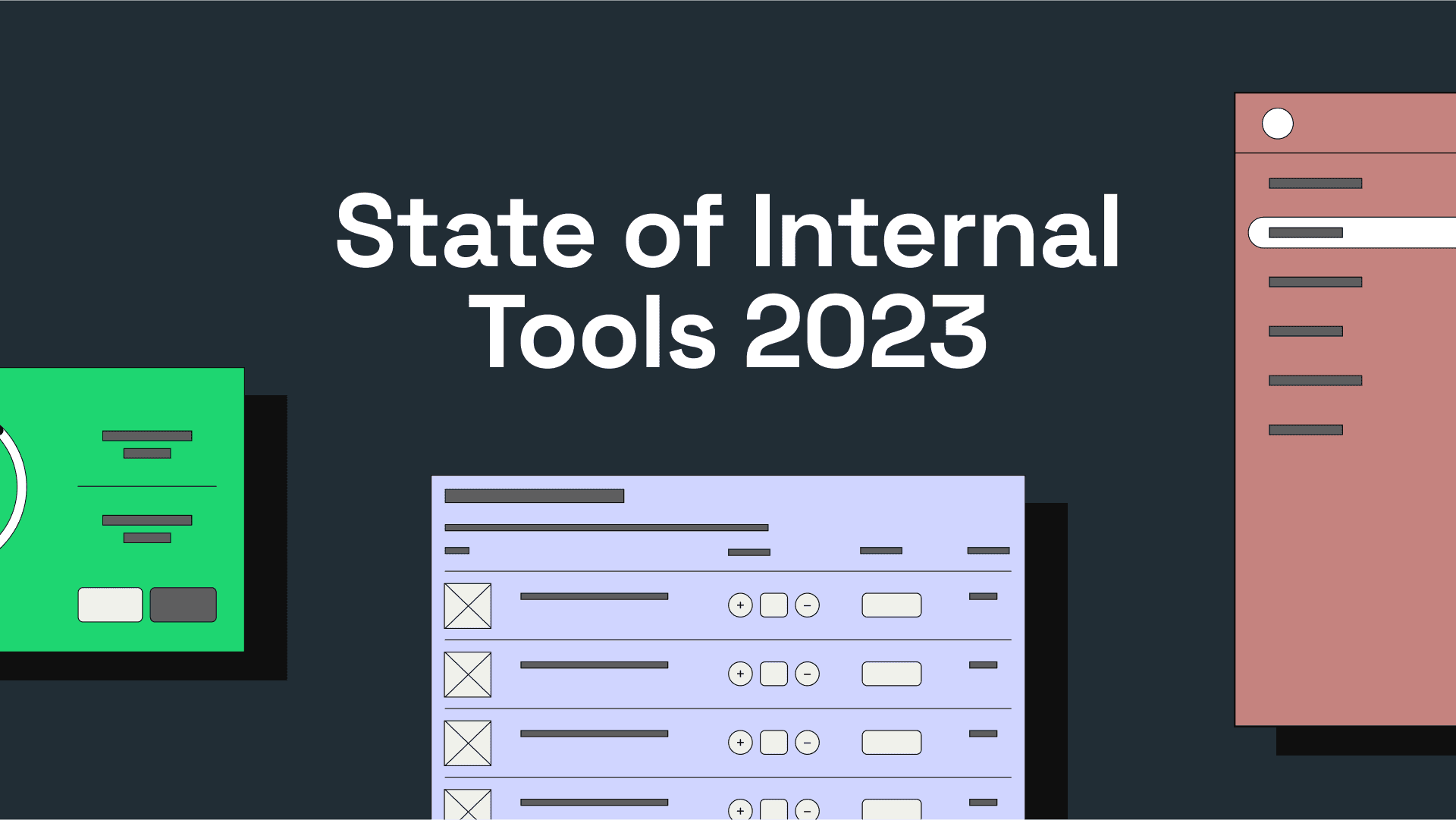We ran a survey of developers and builders of internal tools to learn about how people build and maintain their internal tooling. The survey had 310 respondents, mostly in SaaS, Finance, and Retail, and mostly from mid sized (2-500 employees) companies.
This report outlines the results and what we learned. The TL;DR: internal tools are really important, but rarely get the time and focus they need.
We've launched our 2021 report. Check it out here!
More than 80% of respondents said that internal tools are critical to their company’s operational success. Almost 50% feel that these tools are “very critical” and only 5% think that they’re not critical at all.

Despite how important internal tooling is, teams still struggle to get the buy in they need: more than half of respondents indicated that one of their biggest problems building internal tools is that they don’t have enough time or resources to get the job done.

Resources aren’t the only issue: most internal tools are built on a variety of data sources, and that data constantly changes. Incremental stakeholder asks, lack of clear ownership and responsibility, and difficulty tying impact to revenue were all cited by more than 20% of respondents as big problems.
Another interesting point about ownership: respondents who said they worked in a technical role cited No clear ownership / responsibility as a problem at a much higher rate (31%) than respondents who said they worked in a non-technical role (22%).
Interestingly, bigger companies spend more time on internal tools. Teams at companies with more than 20 employees spend more than 20% of their time building and maintaining internal tools; that number jumps to close to 40% for teams at companies with more than 1,000 employees.

As internal tools become an increasingly critical part of a great infrastructure stack, startups are adding full-time hires to handle them: More than 40% of respondents say their company has full-time positions dedicated to internal tooling.

Full-time internal tools positions tend to be more popular at operationally intensive companies; SaaS companies are among the least likely to have full-time internal tooling positions.

Dashboards and admin panels are the most popular types of tools that teams build internally, usually for user data management. Customer support tools and data entry / collection tools are common as well, while inventory management is a more niche application.

The most common stakeholder for internal tools is Customer Service and Support (refunding orders, updating user information, etc.), followed by Engineering and Data.

About 80% of internal tools are built on top of an internal database and 70% use some sort of internal API. Third-party APIs like Stripe and GitHub are popular too, and are used by around 50% of respondents as a data source.

50% of respondents who said they used internal DBs build their tools on top of Postgres.

When it comes to Third-party APIs, GitHub and Stripe are the most popular, followed by Salesforce and Airtable. Customer support tools like Zendesk and Intercom are also utilized by more than 10% of 3rd party API users.

More than 40% of respondents say they use Google Sheets to build their internal tools, while only around 30% opt for a client side rendering framework like React or Vue. Admin frameworks like Django-admin are also pretty common.

Respondents who said they work in a technical role skew more heavily towards packages like React, but still make good use of Google Sheets.

Internal tools are critically important and take up a significant chunk of engineering time, but they're often a challenging and frustrating workflow for developers. We're hoping this survey helps get the discussion started and brings more data and transparency to the topic.
And if you're interested in the discipline of internal tools, check out the Retool blog for internal tool focused interviews, practical tutorials for frameworks like react-admin, and deep dives into database architecture.
Reader



